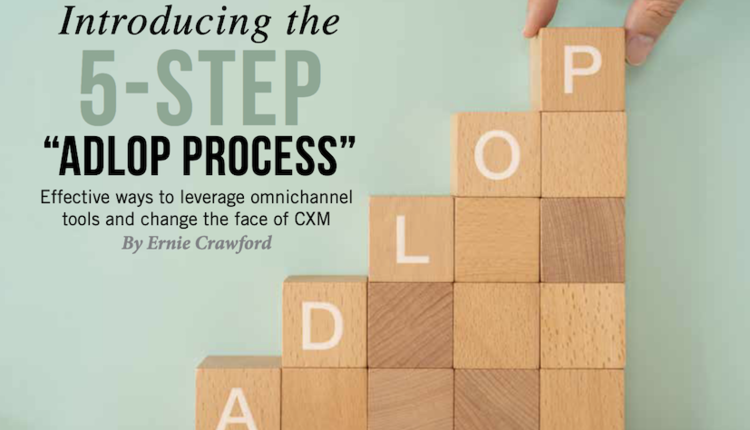We are all being forced to do more with less during the recession. For transaction shops, just creating and delivering documents is no longer sufficient. Tighter customer-focused marketing campaigns using multi-channel TransPromo for higher returns and shorter ROIs are no longer luxuries, but necessities. Organizations strive to become stickier to retain current customers and reach out to new ones, but costs must be kept down. The recession and a new administration are producing a raft of new regulations with short deadlines, driving more legally mandated changes into the transactional document production environment. The critical challenge facing transaction shops is how to implement all these requirements in a decreasing budget with limited staff. The ideal option is to rework the entire transaction document production process; redesign your statements and rewrite your document composition applications. Unfortunately, given tight budgets, limited skilled technical staff and short deadlines, this is rarely possible.
TRANSACTION SHOPS instead are moving to document re-engineering, reworking the documents inside of the print files post-composition instead of having to make changes to legacy applications or document composition systems. Here, the changes are made to the final post-composition print files. By manipulating this data (adding, deleting, modifying), changes can be made more quickly and less expensively than having to rewrite the upstream process. Document re-engineering functionality encompasses changes to existing composed documents up to - but typically not including - the reflow of text. Current document re-engineering capability provides a near-complete ability to rework each individual document, down to the individual elements on each page. By adding, deleting or moving objects on a page (i.e. text, images, graphics or barcodes), the content can be modified, changed or removed as needed. Within a print file, pages can be added or deleted. Manipulating multiple print streams allows individual documents to be sorted, moved and reworked into one or more final print streams. This document re-engineering functionality becomes powerful when applied to solve business issues.
Early versions of document re-engineering required in-depth knowledge of the print data streams involved. These initial document re-engineering products manipulated at the bit-and-byte level of the print stream and required designers and developers who were intimately aware of the intricacies of the print stream languages. Utilizing detailed knowledge of AFP, Metacode and which printers were to be used to print the final hard copies, limited document changes could be made. Today, a new generation of document re-engineering tools are available that hide the mechanics of manipulating the print stream and allow transaction shops to instead concentrate on the documents and what needs to be changed at a higher level within them. In-depth knowledge is still required, but at the document design level, not the printer data stream level. Instead of needing to know the bits and bytes of the printer stream languages, current document re-engineering requires in-depth knowledge of the document layout, typography, one-to-one marketing concepts and your organization's current marketing campaign goals and messages.
TODAY'S DOCUMENT re-engineering projects are driven by several factors, including better TransPromo, regulatory changes and mergers and acquisitions. In 2008, InfoTrends estimated full-color, digital TransPromo will grow to 22.8 billion images by 2012, a compound annual growth rate of 68%. What's driving this? Aside from technical issues such as the availability of low-cost, high-speed color printers, organizations know that their bills and statements are the most likely to be read before discarding and have the longest reading time. This makes transactional documents a prime channel to reach customers with new marketing messages. As organizations become more sophisticated in the use of TransPromo to increase response rates and yield higher ROI, it puts more pressure on the transaction shop to deliver more sophisticated documents with changes made at the individual document level and to be able to modify the document content in shorter timeframes. Document re-engineering meets these needs.
In addition, a new regulation, the Credit Card Accountability Responsibility and Disclosure (CARD) Act of 2009, is impacting transaction shops producing financial/credit card statements. Originally designed to protect consumers in the economic downturn, it has significant consequences for financial organizations. Statements will have to be redesigned to use federal-mandated content, forms and tables and are likely to be increased in length by at least half a page. TransPromo campaigns may be thrown off by these changes. Statements carefully designed to accommodate additional marketing messages may suddenly not have room for all of the proposed messages. Transaction shop schedules will certainly be impacted. The first phase of the CARD act went into effect in August 2009; the second phase goes into effect February 2010. A few months is a very short time to implement major changes in production applications. Most shops cannot rewrite their entire credit card generation system in such a short time; therefore, utilizing document re-engineering can assist organizations, given this new regulation.
The recession has only partially slowed the number of acquisitions within the finance, insurance, telecom and utility industries, which produce the majority of transactional documents. In many cases, after an acquisition, there is pressure to consolidate transaction production operations. This requires disparate application environments be welded together in a short timeframe. For example, a bank may need to rebrand all of an acquired bank's statements with new logos and marketing. Instead of totally rewriting hundreds of applications, all of these applications can be modified in the print file and postpone the upstream changes for later, using document re-engineering. Likewise, as print and archive production operations are consolidated, the ability to load balance becomes more important. A print stream may need last-minute changes (such as a change in barcodes to drive different inserters or create a different type of control file, or even a conversion to a different print language) in order to print at the new consolidated facility, meet SLAs or to maintain load balancing.
Other issues also drive document re-engineering. One being when a service bureau receives pre-composed print data from a customer but needs to make modifications without asking their customer to make changes in their document generation applications. Another factor is that many companies have a large portfolio of legacy applications that still produce mission-critical transaction documents but have very limited (if any) staff who can make changes to the legacy code. Furthermore, marketing departments frequently request changes to transactional documents, but the benefit to the company doesn't cost-justify changing the composition step. Or the time-to-market window needed to stay ahead of competitors doesn't allow for a full rewrite. Or the skilled personnel needed to rework the documents' composition step may no longer be with the company or are already scheduled on other higher priority projects for the next 18 months.
DOCUMENT RE-ENGINEERING today has expanded to span the entire multi-channel delivery environment required to compete today. Originally, document re-engineering only applied to hard copy documents. In today's multi-channel world, document reengineering applies across the board. Used properly, it can leverage cross-channel communications, ensuring common look-and-feel and branding across hard copy and electronic delivery channels and optimize documents within each channel. For hard-copy channels, document re-engineering improves production throughput, increases production accuracy, lowers postage costs and enhances the marketing messages. For electronic channels, document re-engineering removes superfluous hard copy artifacts (such as barcodes) not needed on electronic versions, punches up the presentation by adding color and duplicates the original hard copy deliverable by duplicating inserts before the document are archived or displayed to the customer. Finally, document re-engineering can be applied to multiple print streams to optimize operational throughput and reduce postal costs. All these benefits are driven by a small set of high-level functionality with broad applicability.
STEPHEN D. POE [sdpoe@nautilussolutions.com], EDP, is a principal and CEO of Nautilus Solutions and is a respected expert in enterprise software product development and management, especially within the transactional document and TransPromo communities.












